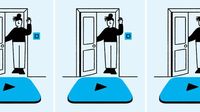YouTube is rapidly redefining the boundaries of television and podcasting, positioning itself as a major player in both arenas. Recent data points show that YouTube now leads in terms of watch time on television screens, marking a significant shift in viewer behavior. In February 2025, YouTube was identified as the top streaming service on TVs according to Nielsen metrics, with users spending more time watching YouTube on large screens than on any other device.
This trend aligns with the addition of a dedicated "Podcasts" tab on the main screen of YouTube's Android TV and Google TV apps introduced on March 18, 2025, which aims to enhance the user experience as the platform continues to attract over one billion monthly podcast users. This updated approach makes it even more straightforward for viewers to discover and consume podcasts directly from their television devices.
YouTube's commitment to enhancing its podcast features signals its aim to seize a larger share of the growing podcast market, which Edison Research noted declares YouTube as the preferred podcast service in the United States. With over 400 million podcast listening hours recorded from living rooms alone, it shows how YouTube is morphing from a primarily user-generated content site into a robust platform for various forms of media consumption.
CEO Neal Mohan acknowledges this change, stating, "When people turn on the TV, they’re turning on YouTube. Television really is YouTube." He emphasized the company's historic evolution from its launch to becoming more integrated into viewers' daily lives. In fact, streaming on YouTube accounts for an astounding one billion hours per day on physical TVs, a landmark that underscores its dominance over traditional content.
Furthermore, YouTube's recent upgrades include innovations like packaging creator content into "seasons" and "episodes," akin to traditional TV shows. This not only helps in organizing content but also promotes binge-watching, a popular viewing trend. Creators also benefit from enhanced monetization opportunities through AI dubbing tools and the ability to embed QR codes in videos, increasing viewer engagement.
As more creators optimize their work for television formats, there is a significant rise in 4K video uploads—up 35% year-over-year. Additionally, the number of creators deriving the majority of their income from TV views has surged by 30% from 2023 to 2024. Notably, 40 of YouTube's top 100 channels are now primarily accessed via televisions. This shift highlights the evolving landscape of content consumption as audiences increasingly seek high-quality programming across platforms.
The advertisement space also reflects this transformation. For instance, in 2024, advertisers spent approximately $244.4 million on women’s sports, illustrating a growing recognition of the commercial potential in increasingly diverse content. Moreover, YouTube’s efforts have caught the eyes of advertisers, though some still hesitate to directly compare it with traditional streaming giants like Netflix, Hulu, or Disney+.
As noted by Toby Katcher, SVP of video investment at CMI Media Group, as the advertising market evolves, perceptions around YouTube's capabilities could change. He stated, “I do think they’re poised for that perception to continue to shift in their direction.” However, there remain hurdles, particularly in YouTube’s ad offerings for connected TV (CTV), which are still seen as less sophisticated compared to established services.
YouTube has begun to tackle these challenges by introducing pause ads and will align ad placements more closely with traditional multi-ad pods starting in May 2025. This integration aims to provide a more seamless viewing experience akin to linear TV. Romana Pawar, Senior Director of Product Management for YouTube Ads at Google, remarked on this initiative, stating, "We want ads to be well integrated into the overall viewing experience."
The perception of user-generated content (UGC) also presents a challenge for YouTube among advertisers who still classify it broadly as less mainstream entertainment compared to scripted shows on traditional networks. Agency executives expressed mixed feelings about the distinction between brands sponsoring content on YouTube versus anywhere else, with some likening content like MrBeast’s productions to reality TV; a category once sidelined as inferior quality.
Ultimately, as YouTube expands its features, the platform continues to harness the potential of established networks while redefining conventional media formats. The upcoming deployment of new integrations aims at enhancing interactivity and viewer engagement, which advertisers are increasingly recognizing as a pivotal component for contemporary content consumption.
This juxtaposition of old and new media continues to shape the landscape of the digital content sphere, leaving us to ponder: is the future of television perhaps already happening on YouTube? With an enormous user base and a growing library of premium-quality content, only time will tell if YouTube can fully transcend its origins as a site for user-generated videos and embed itself into the hearts of mainstream television audiences.



